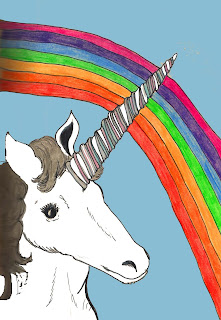On 30 September 1898, the city of New York as we know it today was established when it
merged with the then separate city of Brooklyn.

New
York began as a Dutch trading post in 1624 - they called it New
Amsterdam. When the British took over in 1664 they called it New
York because King Charles II of England had given the land to his
brother, the Duke of York. The Borough of Queens was also named for
royalty, probably Portuguese Princess Catherine of Braganza
(1638–1705), Queen of England, Scotland, and Ireland, while the
Dutch influence remains with Brooklyn, which derives from
Breuckelen, the Dutch word for marshland. Manhattan comes from
Manna-hata, a Native American word for "island of many hills".
The Bronx was named for a Swedish man called Jonas Bronck, who was
the first European settler in the area and built a farm there.
People visiting the farm were said to be going to the Bronck's.
Staten Island derives from "Staaten Eylandt", the name
given to it by Henry Hudson, "Staaten" being the German
word for states.
It's
frequently referred to as "The Big Apple". No-one is sure
exactly why, but it's not because there was a famous brothel there
run by a woman named Eve. More likely it came from a 1909 book in
which author Edward S. Martin says that people in Kansas see it as a
greedy city - a big apple which gets more than its fair share of
sap. In the 1920s the term became popular thanks to a sports writer
called John J. Fitz Gerald writing about a trip to "the Big
Apple."
New
York is associated with being big and full of people. In 2016 the
population was estimated at 8,537,673 living in an area of 302.6
square miles (784 km2), making it the most populous and most densely
populated city in the USA and has been since 1790. It has a bigger
population than 39 of the 50 states; and if the state of Texas was
as densely populated you could fit the entire population of the
world in there. 1 in 38 of Americans live in New York City. Brooklyn
and Queens on their own would be competing for the title of fourth
most populated city. It's also the most linguistically diverse city
in the world with 800 different languages spoken.
You
wouldn't expect a place like this to have much in the way of animal
life, but you'd be wrong. The parks in particular are home to lots
of wildlife. Perhaps when you remember that Central Park alone is
actually bigger in area than the two smallest countries in the world
(Vatican City and Monaco) it seems believable. 15,152 forms of life
have been found in the New York Subway system (though we are
probably talking insects and bacteria, mostly). The city actually
has the highest concentration of peregrine falcons in the world,
because these birds like nesting in high places, so what better
place than the roof of a skyscraper?
Talking
of skyscrapers, there is a 550 foot skyscraper in New York City with
no windows. It was built to withstand the fallout of a nuclear blast
for up to 2 weeks.
There
was one day in New York where no violent crimes were reported
throughout the day. This was November 28, 2012.
On
the subject of crime, you may not believe it, but honking a car horn
is illegal in the city - but it doesn't stop people doing it.
Conversely, it's not illegal for a woman to walk the streets
topless. Farting in church is considered a misdemeanour and there is
a law stating that the penalty for jumping off a building in New
York is death, though with most buildings there that's a law of
nature! Pinball was a crime until 1978, because it was deemed to be
a game of chance - until Roger Sharpe testified that it was a game
of skill by playing the game in court and scoring exactly what he
said he was shooting for, thus proving it was a game of skill.
Finally, up until the second world war, the only date when people
could move house was May 1st.
The
Waldorf Astoria hotel has a "secret" train station
underneath it. It's called Track 61, and is said to have been built
for US president Franklin D Roosevelt, who wanted to be able to get
in and out of the hotel without being seen, in order to hide the
fact that he had polio. FDR's presidential car is still down there.
It may have served other more recent presidents, too - George W
Bush, is said to have had “a train kept permanently idling on
Track 61 in case he had to escape quickly”. Rumour has it, it is
still in use today.
From
2018, New York City will be the home of the world's first
underground park. It is being built in a disused trolley terminal
dating back to 1908, using solar technology whereby sunlight will be
reflected off a huge mirror into the underground space. It will be
called The Lowline.
-
|
|
Browse other topics I've covered in this blog - HERE.
Like my Facebook page for news of Topical Ten posts posts on my writing blog, a weekly writing quote and news of upcoming publications
|









